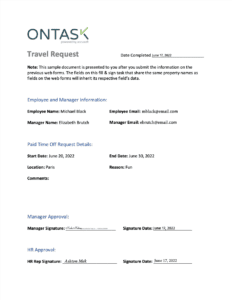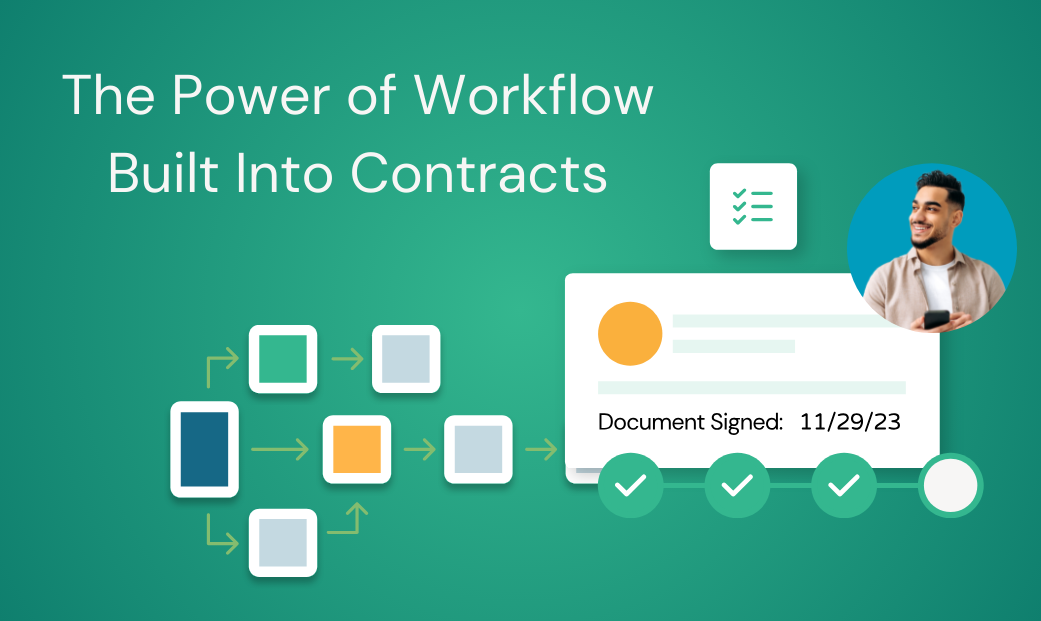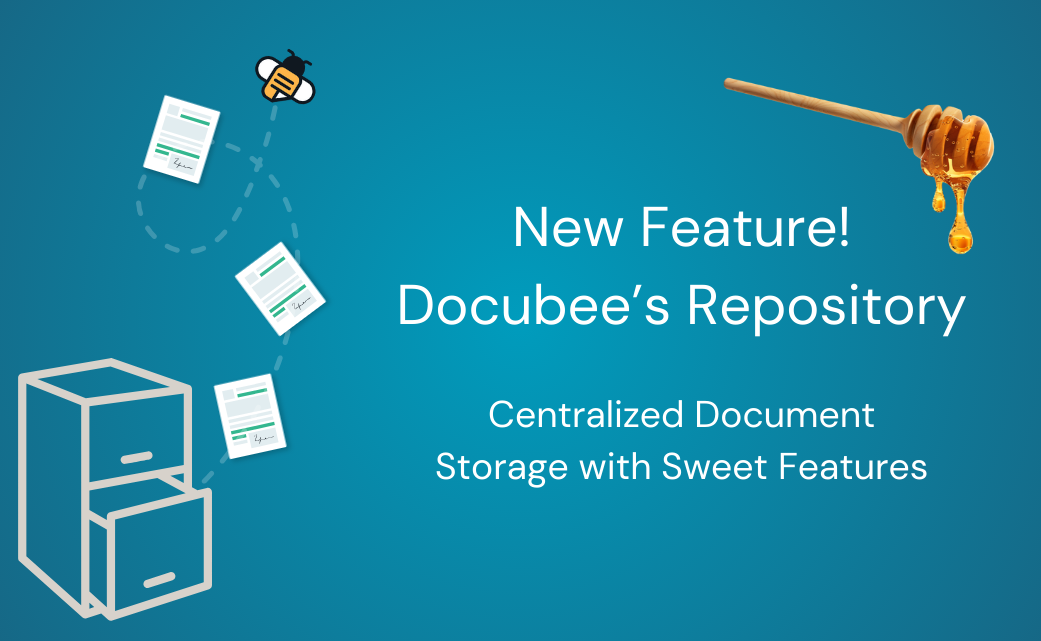It seems like there’s a new buzzword every week, and often people can have different interpretations of business terminology, which makes it difficult to stay on the same page. Workflow automation may seem like one of those new buzzwords, but its role in the workplace is real. This guide to workflow automation explores the definition of workflow automation, its benefits, examples, and more.
What is Workflow Automation?
Workflow automation is basically a way of taking a company’s processes, defining the steps that are involved, and setting up automated actions to make them structured and repeatable. Workflow automation streamlines manual and paper-based processes to increase productivity and efficiency in the workplace.
Benefits of Automated Workflows
In addition to enhancing productivity and efficiency, automation saves you time and money. When you automate your workflows, everything is executed quickly. Think about the time it takes for you to get approvals or how long you wait for a form to be returned. What could you do with the amount of time wasted sifting through emails to find the information you need? How much quicker would your business processes be if all of the information was located in one place?
Some other potential benefits of implementing workflow automation include:
- Reduced risk
- Improved team collaboration
- Faster completion time
- Increased employee efficiency
- Decreased bottlenecks
- Improved operational visibility
- Greater employee accountability
- More compliance adherence
- Less lost documents
In our article on calculating the return on investment for workflow automation, these soft benefits are taken into account along with hard, measurable figures, such as reduced costs, savings on operational and storage costs, labor costs, and productivity gains.
What is Workflow Automation for CRMs?
While CRMs are built to help sales reps, workflow automation programs offer similar benefits to all employees of an organization. These platforms are designed to keep responsibilities and tasks organized; they keep track of project statuses and deadlines, and ultimately reduce unnecessary email traffic.
Each of these systems is incredibly helpful and efficient in their own right—but did you know that they can work seamlessly together?
How Workflow Automation and CRM Systems Can Work Together
Simplified Data Entry and Administration
When you integrate your CRM and workflow automation system, you can kiss double data entry good-bye. For example, on a sales team, every time a sales rep initiates a new contract or quote approval task, the contact information stored in the CRM will flow into a sales rep’s “paperwork” and automatically be sent to the next point of contact—like the VP of Sales or the Chief Operating Officer—and continue to move through the entire approval process. Once the approval process is complete and all parties have signed, the most up-to-date document will be stored in the CRM—no printing or scanning necessary.
Removing the administrative tasks your team has to deal with every day leaves more time for coming up with ideas or creating improvements.
Automated End-to-End Process
Integrating your CRM and workflow automation platform not only eases the burden of gathering signatures from multiple parties, but also automates the entire end-to-end process. Where the document is sent before and after each signature can be entirely automated, which means your team doesn’t have to worry about printing, scanning, and routing the document to the next party.
Docubee, for example, takes this one step further by providing digital signatures. A digital signature certifies that the document has not been modified since the last signature, so your team can be sure that each approval is legitimate. Whether your approval process is short and sweet or complex, automating the end-to-end process helps you put more valuable time back into your workday.
Streamlining Processes with Workflow Automation
Workflow automation can be used in a variety of ways to streamline processes. For example, most approval signatures can be streamlined with workflow automation, according to a survey by AIIM:
“One notorious process bottleneck that can be speeded up by use of mobile tablets is that of the approval signature, which may be a process confirmation, a payments approval, a professional sign-off, a customer contract or a patient consent. We found in a previous AIIM survey, that for 40% of organizations, half or more of their electronic workflows are interrupted by physical sign-offs, generally requiring multiple paper copies to be printed.”
Here are two specific cases of workflow automation at work:
Hiring and Onboarding
TalentBoost, by GattiHR, used workflow automation to streamline their recruiting and onboarding practices.
They had to hire 1,500 people in one month for a prominent new client, and their existing tools weren’t up to the task. They turned to Docubee, and were able to integrate Docubee into their talent recruiting and onboarding software within a few days. With workflow automation integration, including branching logic, pre-populated documents, digital signatures, and simplified reporting, TalentBoost was able to speed up their offer acceptance rate.
Employee Evaluations
When COVID-19 began spreading throughout the U.S. and became widespread, The Wyanoke Group switched to remote work, which required a digital solution for their paper-based employee review processes.
In addition to digitizing the required forms, Wyanoke was able to identify tasks for each participant, administer individual permissions, and track the progress of each workflow in the new automated Docubee system.
Signs You’re Ready for Automation
If your workflows take an excessive amount of time to complete, you need a more efficient solution. How do you know when your processes are lacking? Some of the telltale signs you need workflow automation software include:
You don’t have a designated approval route for each process.
Approval processes for documents can be daunting. You need your boss to see it, their boss to approve it, and then you need the CEO to give their OK. When you send the document off for approval, oftentimes it becomes a waiting game full of uncertainty and delay. If you don’t have a workflow for each part of your approval process, then you should consider workflow automation as a way to streamline approvals.
Forms require so much time and effort that they become a hassle.
When you send someone a form, whether it’s a contract or a notice, there are a lot of steps to take. Between the scanning, emailing, snail mailing, downloading, and printing required to get a form manually filled out, it’s an entire process in itself. Form automation can help streamline form completion in your workflow.
Obtaining necessary information is time-consuming.
When you need to request information from someone, whether it be a file that they have or a form they need to fill out, you often find yourself struggling to get that information in your hands. We all work with busy schedules, and sometimes those schedules get so hectic, that we forget about certain tasks. Emailing to follow up is both inefficient and irritating. Automated reminders, required fields, and more can be just one part of your workflow automation solution that helps you save time.
The paper trail is long, and information is always missing.
Have you ever tried to find something in your inbox from a project that started over two months ago and has become utterly lost? The information you need is probably scattered through email threads somewhere in cyberspace. Or, going further back in time, are you searching through a physical file cabinet? Whether it’s searching through a physical paper trail or a digital one, lack of organization can result in wasted time and critical information being lost forever.
Workflow automation isn’t a magic wand you can wave over broken processes to make them all better — but, if you have significant workflow and process issues, the right workflow automation software can help you resolve them.
How to Choose the Right Workflow Automation Software
Companies often seek out web-based tools for help instead of developing their own solution. Looking for workflows that accommodate digital signatures? More focused on fillable form capabilities? What about the ability to integrate with your CRM?
While productivity is one of the primary reasons companies choose automation, there are many department-specific benefits as well. It’s important to determine what your main goals are so you know what to focus on. Here’s how you can find the right workflow automation software for your business:
Take a Walk in Your Employee’s Shoes
Any workflow automation software you choose should have a user interface that all team members can fully adopt. Does the platform allow you to easily create, organize, and group multiple workflows in one simple, centralized dashboard? Is the dashboard clean and intuitive? Are prompts easy to understand? Can Bob from the sales department quickly navigate the platform without getting lost in a sea of tabs? Asking these important questions and demoing products before buying a subscription not only saves you money but also helps you gauge employee buy-in and the amount of time needed for employee onboarding.
Consider the Customization Factor
While ease of use is a significant decision-making factor when considering automation software, the customization factor is just as important. First, you need to ask yourself what level of customization your team needs from their automation software. Do you need features that can be tailored for multiple departments in the company? Do you want to be able to design forms and documents within the platform? By understanding how adaptable you need your software to be—and how process-specific it needs to be—you can make the most informed decision before requesting a quote.
Don’t Forget About Accountability & Transparency
If a workflow automation platform is incapable of tracking progress, then it will do little to improve your company’s overall efficiency or task accountability. You can avoid this problem by using a tool that gives your department the power to track workflows and their respective status through a simple, sleek dashboard. In doing so, you can keep the pipeline moving and help maintain team productivity and efficiency.
Determine Your Needs, Wants and Nice-to-Haves
Every company has its own set of departmental needs. This is why it’s critical to perform an audit of each department’s needs during the decision-making process. Interview your employees or ask managers about what they would like to see out of workflow automation software. Consider asking:
- Does the workflow automation platform integrate with current tools?
- Does it have the capabilities that your employees need?
- Is this solution best for enterprise workflow automation or better for smaller companies?
Get Started With Docubee, A Workflow Automation Solution
Once you’ve identified the strengths and weaknesses in your process, you’re ready to begin finding solution. Start your research with Docubee. Schedule a customized demo today to learn how we can help you manage your business processes more efficiently.











